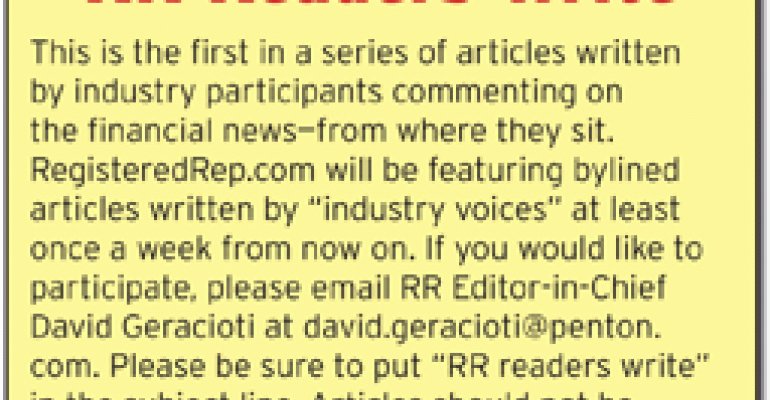November’s election has come and gone, and with it so has Democrat control of the House of Representatives. Normally, government gridlock is extremely good for stock market investors, based on looking at real investment returns after inflation.
But because I distrust the accuracy of the CPI (the government has such a stake in its consequences), I use gold as a deflator. Using this measure back to 1973, and the total return on the S&P 500, investors have had yearly real returns of 15 percent on average for all split governments, and yearly real losses of -10 percent when government is unified with the same party controlling the House, the Senate, and the Presidency. For example, the S&P 500 Index is up 35.7 percent from the end of 2008 through November 5, 2010, but gold is up 61.3 percent, so investors are losing about -10 percent annualized in real terms with our recent unified government, which is consistent with unified government by either party. In fact, since 1973, gold has gone up at an annual rate of 28.8 percent when government is unified, which explains in part its recent giant rally. Conversely, when government is split, gold has gone up at an annual rate of only 3.4 percent, which suggests it’s best to be careful about the quality of this gold rally, at least in the short term.

The Ratchet
Even though the historical record for real returns with gridlock is great, I am worried that history will not repeat itself in the near term because there is a difference between benign gridlock, when economic times are “normal,” and malignant gridlock, when they are not. We are in an economic crisis which may be aggravated by having Congress itself split and the growth in government subject to a ratchet effect making it difficult to make government smaller.
While Reagan had a split Congress and a fabulous run, Hoover had a split Congress during his last two years, and the market lost 63.4 percent. In times of crises, a Congress that cannot undo its mistakes is not good. Could you imagine using your computer without an undo button? What concerns me is that the United States had in some ways more relative positives in those times than we do now, and the market still suffered enormously. For example, the dollar was strong, we were net creditors to the world, and government was a relatively small component of the economy.
And that certainly isn’t the case now. Against this background, some of the initial indications coming out of Washington do not appear to be favorable for seriously reducing the size of government, which is essential to long-term economic health. Fed Chairman Bernanke’s Treasury is printing an additional $600 billion to fend off deflation, and Congress has yet to even produce a budget for the fiscal year that has already started and may not even settle our tax rates until after the New Year.
The Republican Minority Leader, Senator McConnell, said that he would work with the Democrats to fund electric cars and coal projects, and Speaker Pelosi is determined to be the House Minority Leader, notwithstanding losing over 60 seats in the House.
If it turns out to be a “business-as-usual” Congress afraid of being branded “do-nothing” while the dollar is slipping closer and closer to a run due to excessive quantitative easing; it will not be good for real investment returns.
The acid test of this Congress will be whether it can rein in spending, and drastically reduce our borrowing and regulatory burden, immediately, if not sooner. As many economists note, we now face a liquidity trap, where additional injections of money into the economy fail to stimulate demand. Interest rates cannot be reduced below zero, although we are trying to do that with TIPs.
A key driver of this liquidity trap is what I would call the “regulatory trap” where government harbors the illusion that additional regulations have no cost. In fact, some have estimated the regulatory drag on the economy at roughly $2 trillion. Think of the regulatory drag as deflationary because it freezes business and Bernanke’s Fed as inflationary, and you will understand better why we’re all feeling so bipolar.
To give you some perspective, I believe Sarbanes-Oxley was the main straw that broke the back of small business job growth in the United States. This bipartisan law passed 99-0 in the Senate and 421-3 in the House. It had only 16 regulations. That was enough to be an important factor in systemically raising unemployment from 5.9 percent when it passed at the bottom of the last recession to 9.6 percent last month.
Between health care and financial regulation reform, there are over 1,400 new regulations in the works. The American investor is like a skier at the base lodge watching an avalanche start at the top of the mountain. Who can be optimistic that this Congress can stop the regulatory avalanche, or get control of our budget or our debt? There are just too many permutations, and too many opportunities to play good cop, bad cop, and really bad cop. It’s not your father’s gridlock.
Eric Singer, principal of Congressional Effect Management, runs the Congressional Effect Fund (CEFFX), which only invests in equities when Congress is on vacation. For more, see congressionalfund.com.






